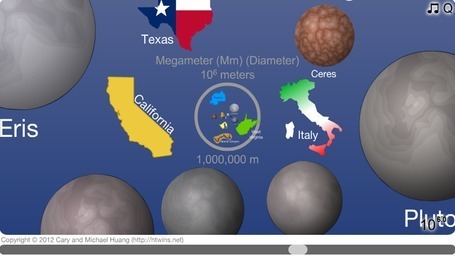This type of mapping project is a fantastic way to teach scale to elementary school students.
Get Started for FREE
Sign up with Facebook Sign up with X
I don't have a Facebook or a X account
 Your new post is loading... Your new post is loading...
 Your new post is loading... Your new post is loading...
Matthew DiLuglio's curator insight,
September 10, 2013 11:07 AM
I thought it was funny that even though many of the published telescopically captured photos are composites of different lens and filtered shots of a single item, or area of space, that if that item or area were really to be examined, to get more of a feel for the universe as it truly is rather than how we would ordinarily see it, would be to consider it from an infinite number of perspectives. Rather than just one perspective, as humans are limited to, the universe has many eyes. Instead of taking many photographs from the same perspective, we could, as many modern scientists do, do in-depth scans using X-ray technology, and magnetic resonance, assessing composition, to create a full picture of all angles, zooms, and subjects of everything, in order to determine more about origins and mysteries of the universe. I would endorse that to be done on an infinite scale, complete with documentation of all spatial anomallies and occurances, such that completion of understanding could, in theory take place by crossing the gap of the notion of infinity by utilizing technology to one's advantage. This would allow us not to waste time looking at every detail, but to have something with more processing capabilities understand it for us, and communicate that infinity in a way that we could see it. There are dangers of using X-ray technology, and it doesn't seem like NASA really cares about (as one could hope) not harming alien life, or planting life on other worlds, etc. I would more forcibly endorse that we do not try to observe other worlds and the Universe at all, because god forbid, some alien colony finds us and sees that we are not only cuturally divided, we are a torn world, shattered in the aftermath of the destruction that comes from our selfishness and pride that has long dominated the hearts of men. They might be disappointed, and they should be. |

Joe Andrade's curator insight,
July 7, 2013 10:08 PM
This is a great method of teaching some of the principals behind understanding spatial analysis. An important skill in understanding the world we live in. |











